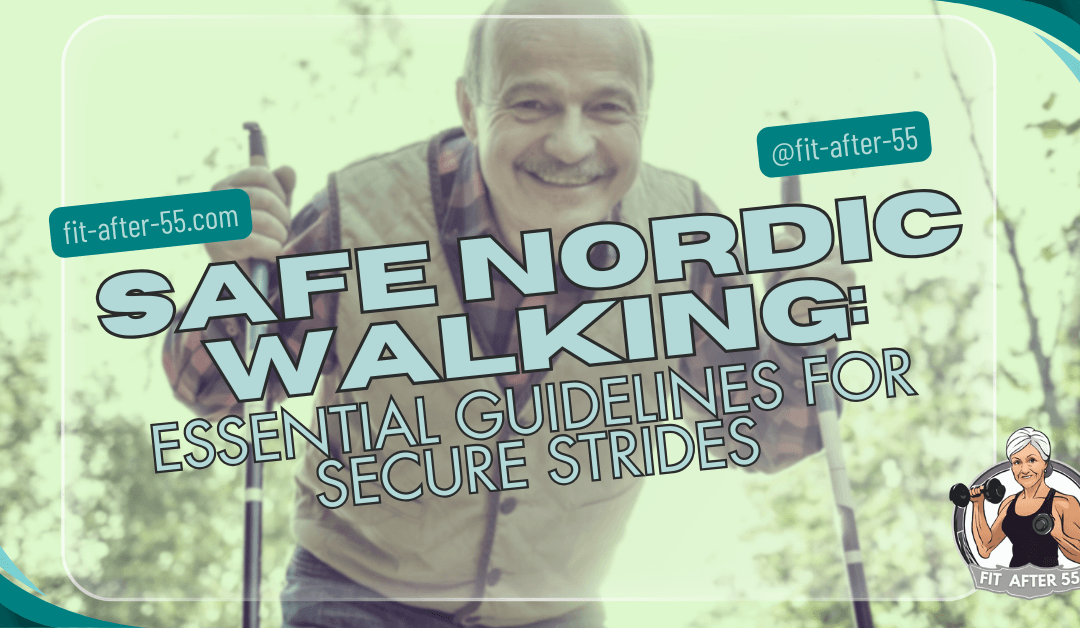Maintaining an active lifestyle becomes necessary for overall health and well-being as individuals age. Nordic walking is excellent for those aged 55 and above seeking a low-impact yet highly effective workout. This specialized form of walking, characterized by specially designed poles, offers a full-body workout while minimizing the risk of injury commonly associated with more high-impact exercises. However, ensuring a safe Nordic walking experience requires adherence to essential safety measures and proper techniques tailored to the needs of older adults.
Our comprehensive guide aims to give older adults the knowledge and confidence to embark on safe Nordic walking journeys. From pre-walk preparation to mastering proper technique and navigating different terrains, we delve into the key considerations necessary for a secure experience. Whether you’re a newcomer or a seasoned enthusiast, our tips and insights will empower you to stride confidently towards improved fitness and vitality, ensuring each step is both safe and invigorating.
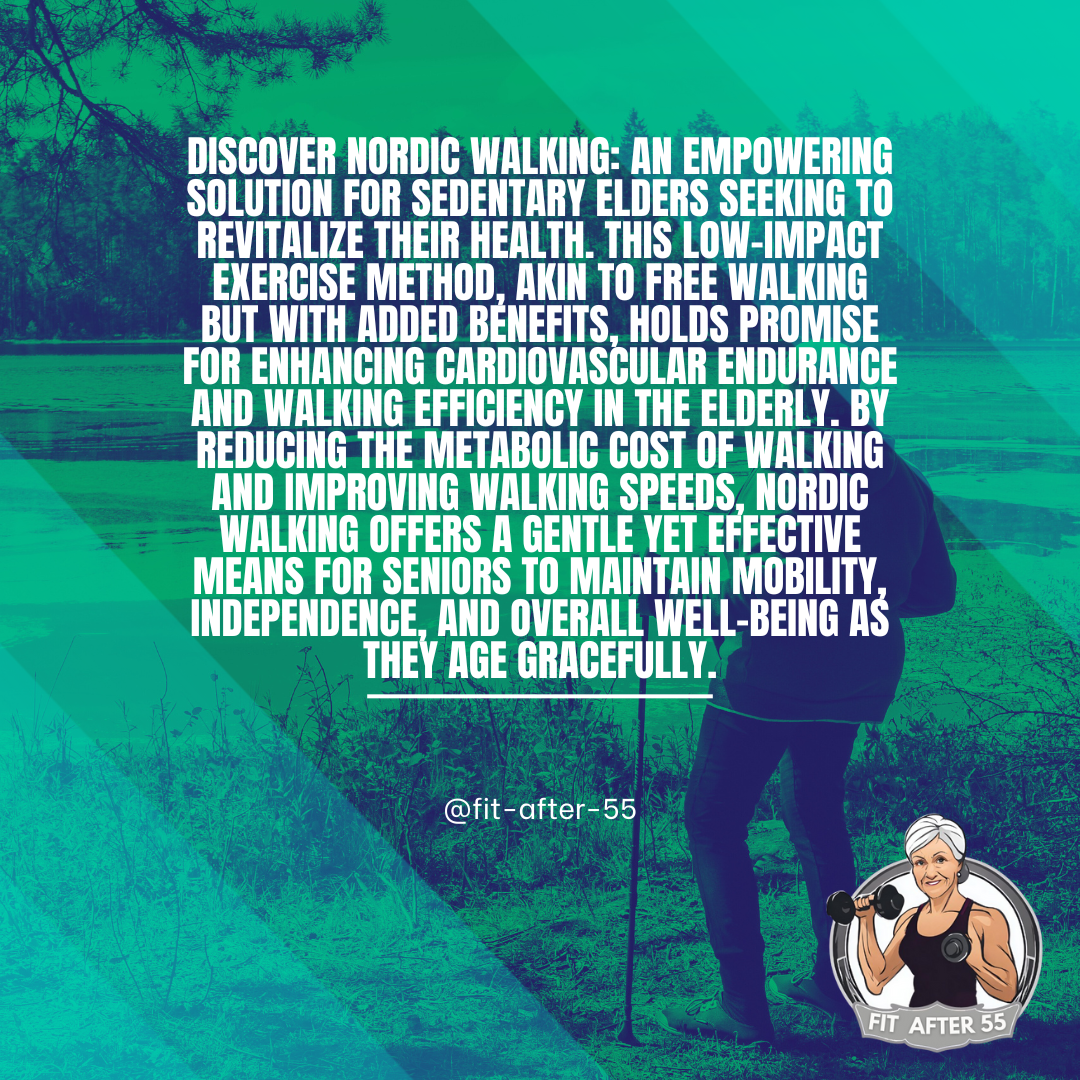
Ensuring a Safe Nordic Walking: Techniques and Tips for Secure Strides
Nordic walking, an enhancement of ordinary walking with specially designed poles, has grown in popularity as a full-body workout. While it’s a low-impact activity suitable for a broad demographic, paying heed to safety measures ensures a positive experience for all participants.
Understanding the essentials of Nordic walking and appropriate preparation is crucial to engage in this activity confidently. Proper technique amplifies the benefits and minimizes the risk of injury, enhancing both safety and enjoyment.
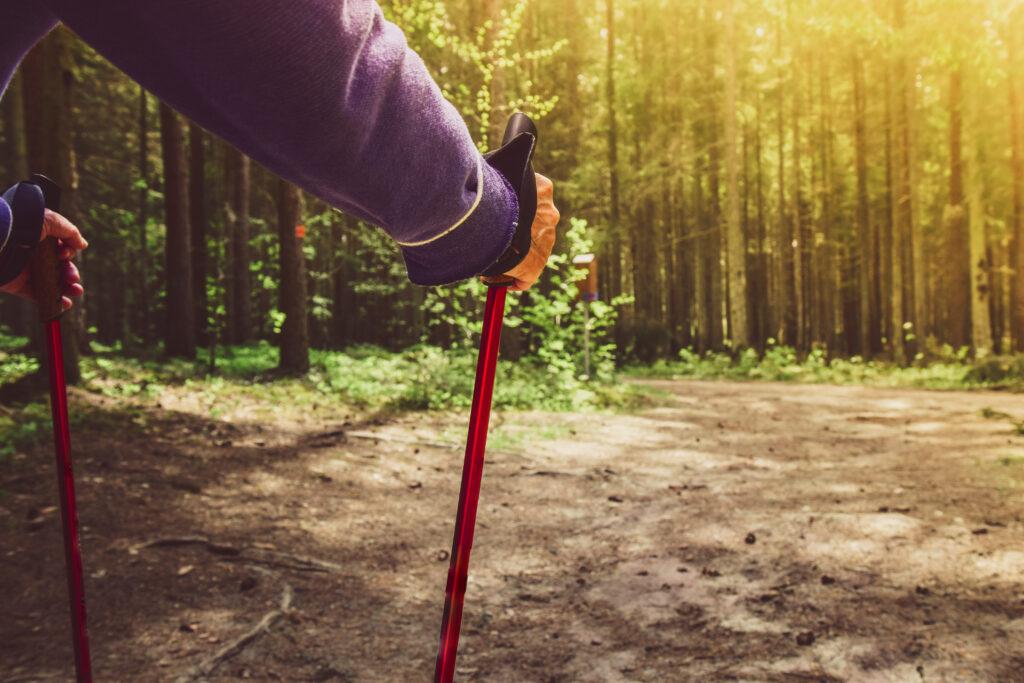
Before you set off on your walk, it is essential to plan.
From checking weather conditions to selecting the right gear, each preparation step plays a crucial role in your safety. It’s not just about the walk itself; your technique and posture can make a significant difference in how effectively and safely you navigate through different terrains. Being prepared for the unexpected, from wildlife encounters to sudden weather changes, means understanding how to handle each situation calmly and efficiently.
It’s these prudent measures that turn a simple walk into a safe, invigorating, and enjoyable fitness undertaking.

Key Takeaways
- Proper preparation and technique enhance safety and enjoyment in Nordic walking.
- Anticipating and understanding how to navigate various challenges ensures a well-rounded experience.
- Posture, awareness of surroundings, and a clear post-walk recovery plan contribute to a safe Nordic walking session.
Understanding Nordic Walking
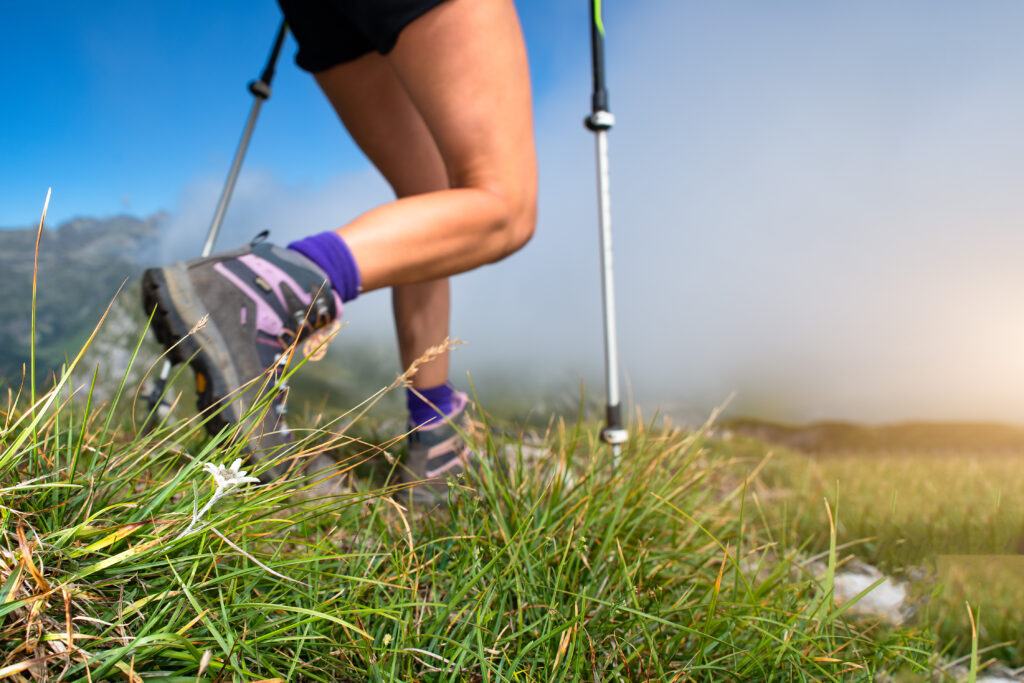
Nordic walking transforms regular walking into an effective and efficient full-body workout. It engages more muscles and burns more calories than traditional walking.
Benefits of Nordic Walking
- Full-body workout: Incorporates over 90 percent of your muscles, providing a comprehensive exercise session while you walk.
- Increased calorie burn: Burns more calories compared to regular walking due to the additional effort from using the walking poles.
- Lowered impact on joints: Particularly beneficial for reducing stress on knees and leg joints.
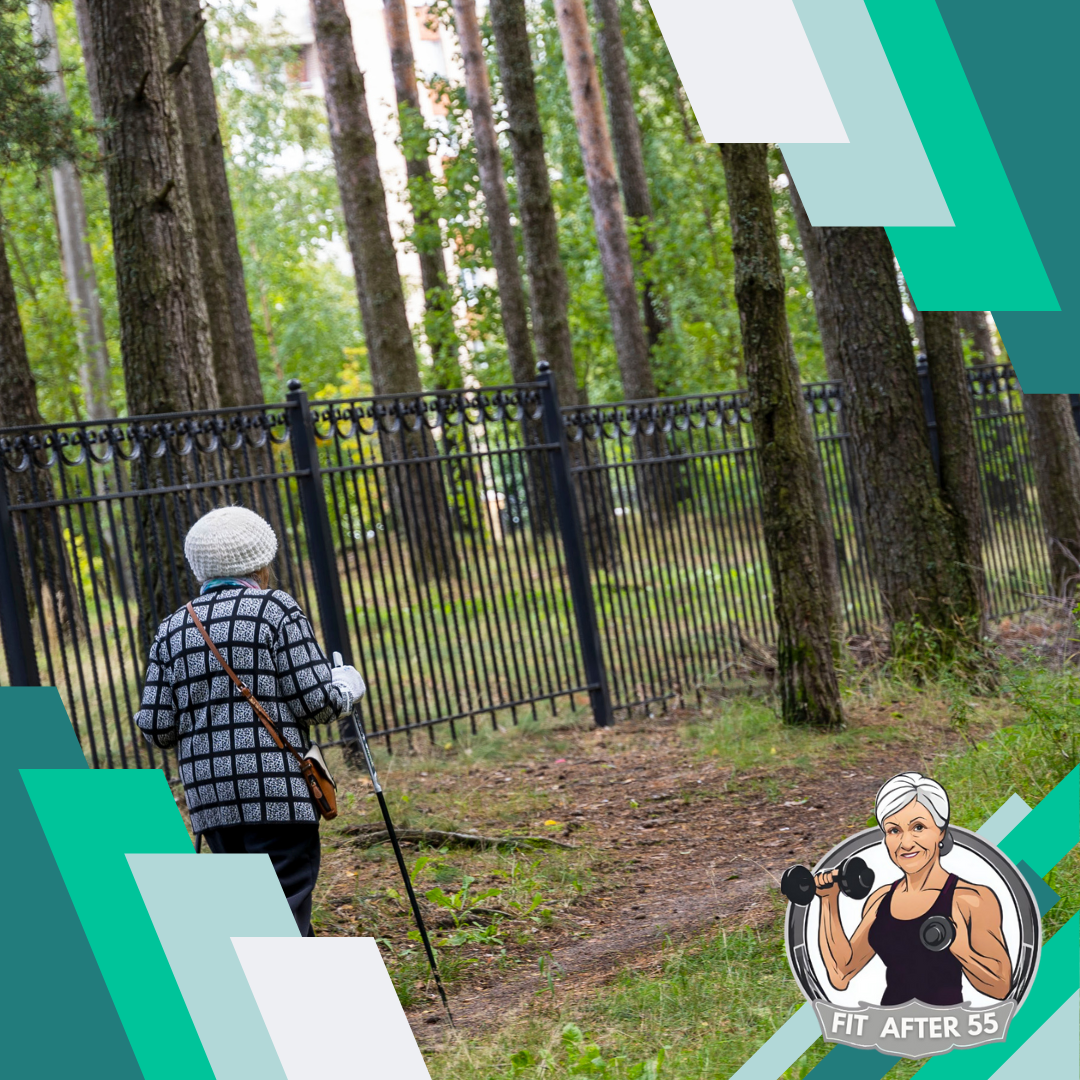
Key Equipment for Safety
- Poles: Essential for balance and support; available in lightweight aluminum or carbon materials.
- Choose poles with adjustable heights and comfortable grips for a safe Nordic walking experience.
- Shoes: Opt for shoes with good tread and support to maintain traction and reduce the chance of slipping.
Pre-Walk Preparation
Effective pre-walk preparation is essential for a safe Nordic walking experience. Planning your route, considering the weather, and doing warm-up exercises are crucial to ensuring your walk is both enjoyable and safe. Choosing trails within one’s fitness level and experience is also important.
Route Planning
- Select a Route: Choose a path that matches your fitness level, familiarity, and safety. If you are a beginner, opt for flatter, well-trafficked trails.
- Inform Others: Let someone know your planned route and estimated return time for added security.
Weather Considerations
- Check the Forecast: Before heading out, review the weather conditions to avoid being caught in undesirable weather.
- Dress Appropriately: Wear layers, protective gear, and sunscreen based on the forecast to prevent discomfort or health issues.
- Stay Hydrated: Especially in hot weather conditions, to avoid dehydration
Warm-Up Exercises
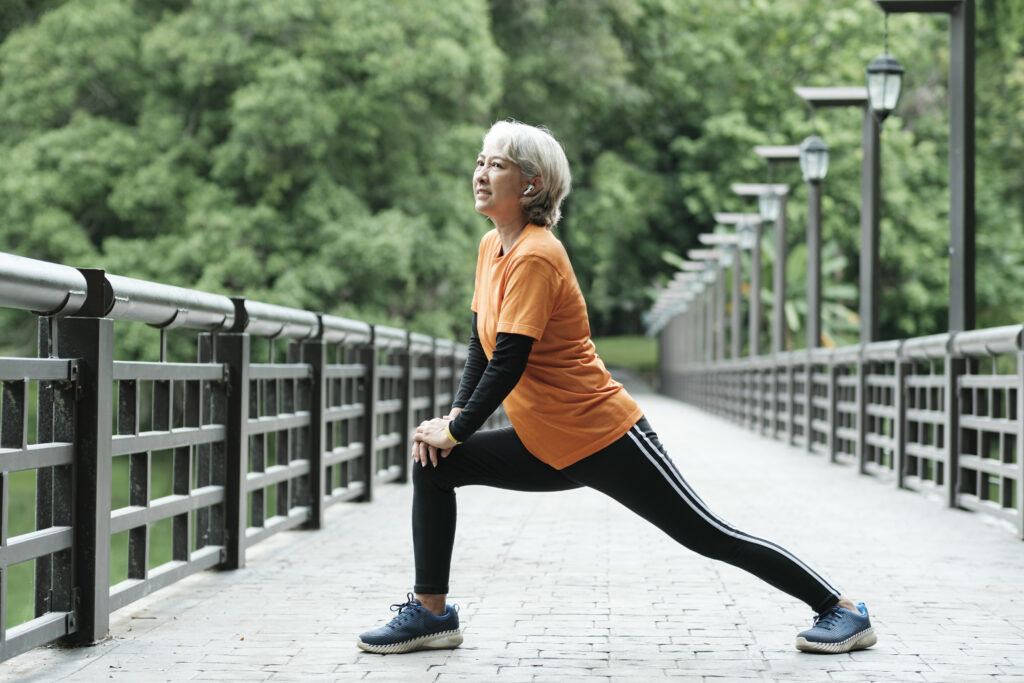
- Activate Muscles: Perform a series of dynamic stretches to prepare your body, focusing on your legs, arms, and shoulders.
- Start Slowly: Begin your walk at a slower pace to elevate your heart rate gradually and ready the muscles for increased activity.
Proper Technique And Posture
To maximize the benefits of safe Nordic walking, it’s crucial to master the proper technique and maintain the correct posture.

Handling The Walking Poles
When using walking poles, your grip should be light yet secure, allowing for a fluid movement that complements your natural stride. Always keep the poles angled backward, and ensure the pole tips touch the ground when your opposite foot is forward.
For hard surfaces, attach rubber tips to your poles and remove them when walking on softer ground.
Walking Mechanics
Video Credit: @SikanaEnglish
Your walking mechanics involve a coordinated movement between your arms and legs. As your left foot steps forward, your right arm should swing in unison. Keep your shoulders relaxed and down and your chest open.
For propulsion, push off with the pole on the opposite side of your advancing foot. This action should be a natural extension of your stride, adding power without straining your body.
Learn more about the 10-step process of Nordic walking.
During The Walk
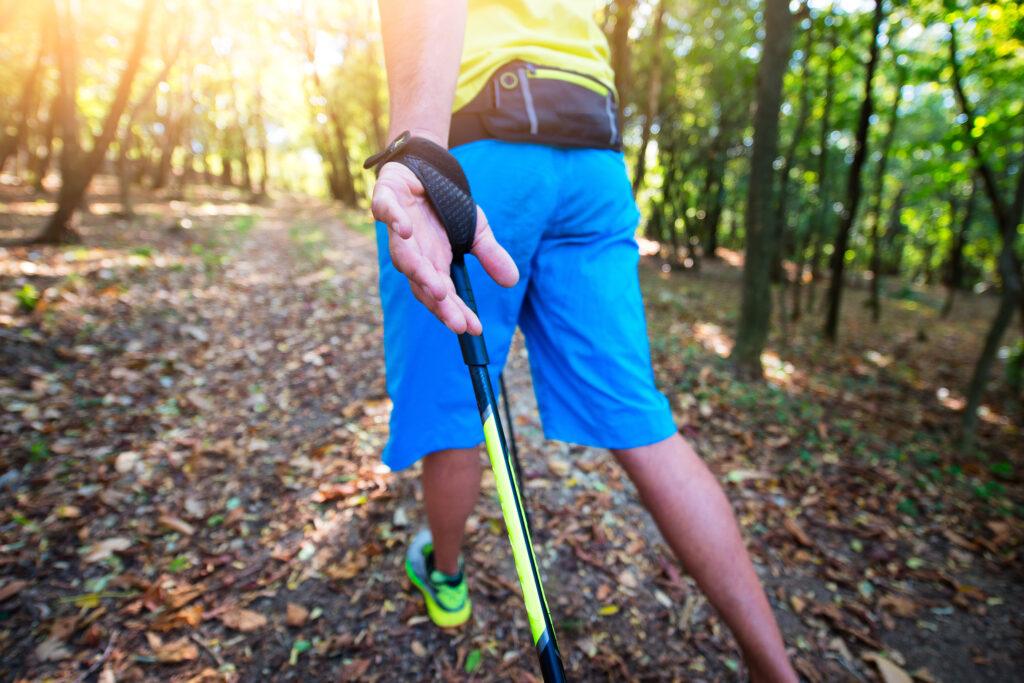
Detail of Nordic walking stick with hand hook.
When you head out for a Nordic walk, your safety is paramount. It’s essential to stay aware of your surroundings and manage your pace to avoid overexertion.
Maintaining Spatial Awareness
Keeping a lookout is crucial during Nordic walking. Always be mindful of your environment, including other pedestrians, traffic, and obstacles that may get in your way.
It’s recommended to:
- Avoid using headphones to stay alert to sounds around you.
- Look ahead and around periodically to foresee potential hazards.
- You may also use reflective clothing or accessories, especially when walking during low-light conditions or near roadways, to enhance visibility to others.
By doing so, you can prevent accidents and navigate your path with confidence.
Managing Pace and Effort
Moderate your intensity according to your fitness level and the conditions of your walk to maintain safety.
Here are a few tips to help you:
- Start with a warm-up pace and gradually increase your speed.
- Use the talk test: If you’re unable to hold a conversation, you may be overexerting yourself.
Video Credit: @StormFitnessAcademyLtd
Balancing your pace helps conserve energy and avoid strain, ensuring a productive and safe Nordic walking session.
Navigating Different Terrains
In Nordic walking, your safety largely depends on how well you adapt to different walking surfaces. Awareness and the proper technique can help mitigate risks.
Urban Walking Surfaces
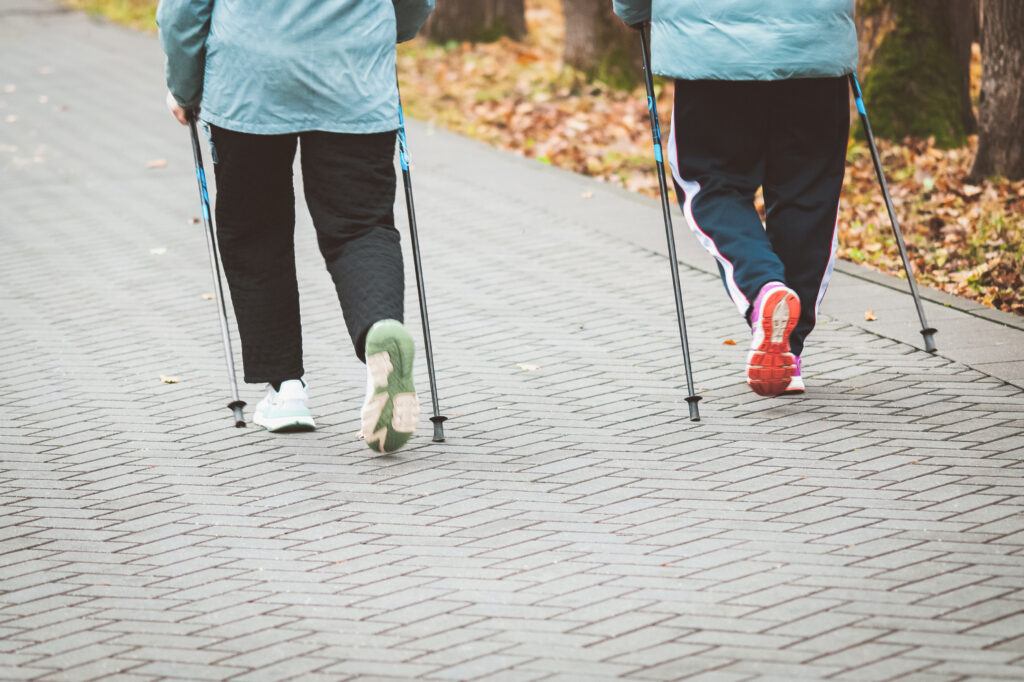
Urban environments offer smooth and predictable surfaces, but that doesn’t make them hazard-free.
On sidewalks and paved paths, you need to be mindful of uneven pavements, curbs, and slippery conditions when it’s wet or icy. Ensure you’re wearing footwear with good traction, and use your Nordic walking poles to maintain balance. Be especially cautious at intersections and use designated crosswalks.

Trail and Off-Road Conditions
When you’re on trails or off-road terrain, the conditions can be significantly more challenging. To stay safe on steep or slippery terrain, focus on the path ahead and be prepared to adjust your stride and pole use to adapt to changes like muddy patches, rocks, or fallen leaves. It’s important to have poles with appropriate tips for these conditions and to wear sturdy boots that support your ankles.
Dealing With Wildlife And Domestic Animals
When Nordic walking, you may encounter both wildlife and domestic animals. It’s crucial to know how to handle these situations to ensure your safety and the welfare of the animals.

Wildlife Encounters:
- Stay Calm: Remain composed and avoid sudden movements.
- Make Noise: Alerting animals of your presence can prevent startling them. For tips on how to do this effectively, check out Intermountain Healthcare.
- Carry Bear Spray: Having bear spray can be a lifesaver if you’re in bear country.
Domestic Animal Encounters:
- Respect Leashes: Give space to leashed animals; they may be protective or unpredictable.
- Don’t Feed: Feeding others’ pets can encourage negative behaviors.
- Avoid Approach: Not all animals are friendly. Be cautious and observe an animal’s body language.
| Encounter Type | Action to Take | Additional Tips |
|---|---|---|
| Wildlife | Back away slowly, don’t run | For bears, talk calmly |
| Domestic Animals | Do not approach, respect the owner’s space | Observe behavior before any action |
Remember, it’s about being proactive and respectful to avoid potential dangers during your walk while enjoying the natural surrounds. For a more detailed exploration of staying safe around wildlife, review the advice from Bearfoot Theory.
Handling Emergencies And Injuries
When engaging in Nordic walking, it’s crucial to be prepared for any potential emergencies or injuries. Understanding first aid basics and having a strategy for contacting emergency services are essential components of your safety plan.
First Aid Basics
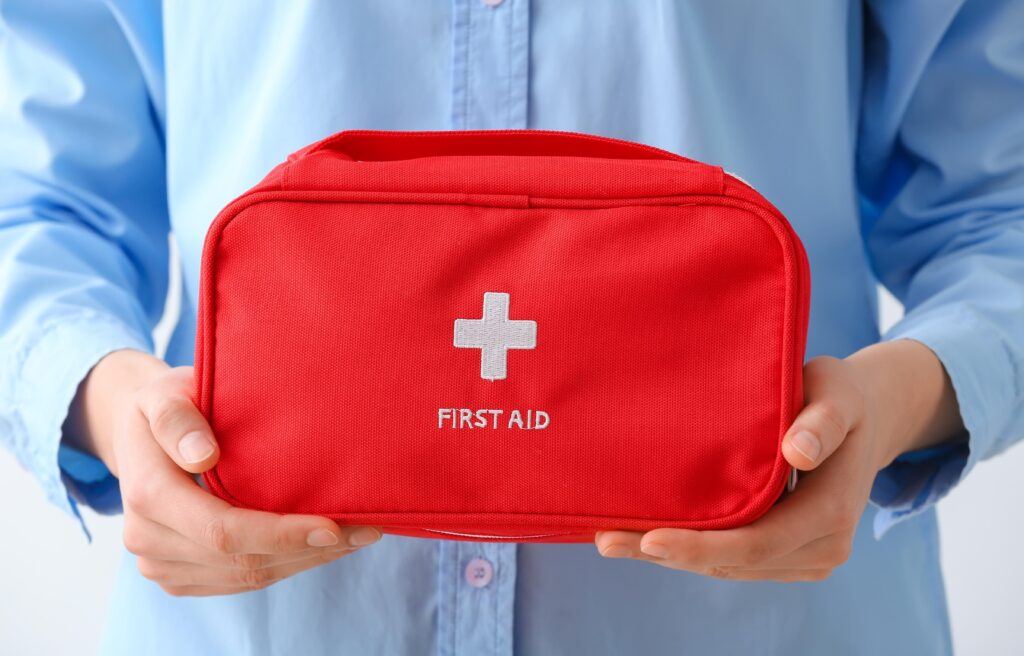
Cuts and Scrapes:
- Clean the wound: Rinse with clean water, and avoid using soap directly on the wound.
- Stop the bleeding: Apply gentle pressure with a sterile bandage or clean cloth.
Sprains and Strains:
- Rest: Avoid putting weight on the affected area.
- Ice: Apply ice wrapped in a cloth for short periods.
Insect Bites or Stings:
- Remove the stinger: Scrape it out sideways with a fingernail or credit card.
- Control swelling: Apply a cold pack to reduce swelling and pain.
Emergency Contact Strategies
Carry a Phone:
- Ensure your phone is fully charged before you leave.
Emergency Contacts:
- Have the numbers of local emergency services saved.
- Inform someone about your walking route and expected return time.
Location Services:
- Consider enabling GPS tracking on your phone.
- Use apps designed for outdoor activities to share your location in real-time.
Post-Walk Recovery

After completing your Nordic walking session, proper post-walk recovery is crucial for muscle relaxation and refueling your body. This includes specific cool-down exercises and attentive hydration and nutrition.
Cool-Down Stretches
Before you finish your walk, gradually slow your pace to lower your heart rate. Then, focus on cool-down stretches to reduce muscle stiffness. Here are some targeted stretches for Nordic walkers:
- Hamstring Stretch: Place your heel on a low step, keep your leg straight, and lean forward until you feel a stretch at the back of your thigh.
- Calf Stretch: Stand an arm’s length from a wall, step one leg back, and press the heel down while keeping your leg straight.
Video Credit: @thefabcompanykimdavies7231
Hydration and Nutrition
Replenish your body with fluids and nutrients soon after your walk.
- Hydration: Drink water to rehydrate. If you’ve walked for more than an hour or sweated profusely, consider a drink with electrolytes.
- Nutrition: Eat a balance of carbohydrates and protein, such as a banana with a spoon of peanut butter, to help your muscles recover.
Safe Nordic Walking Towards Better Health
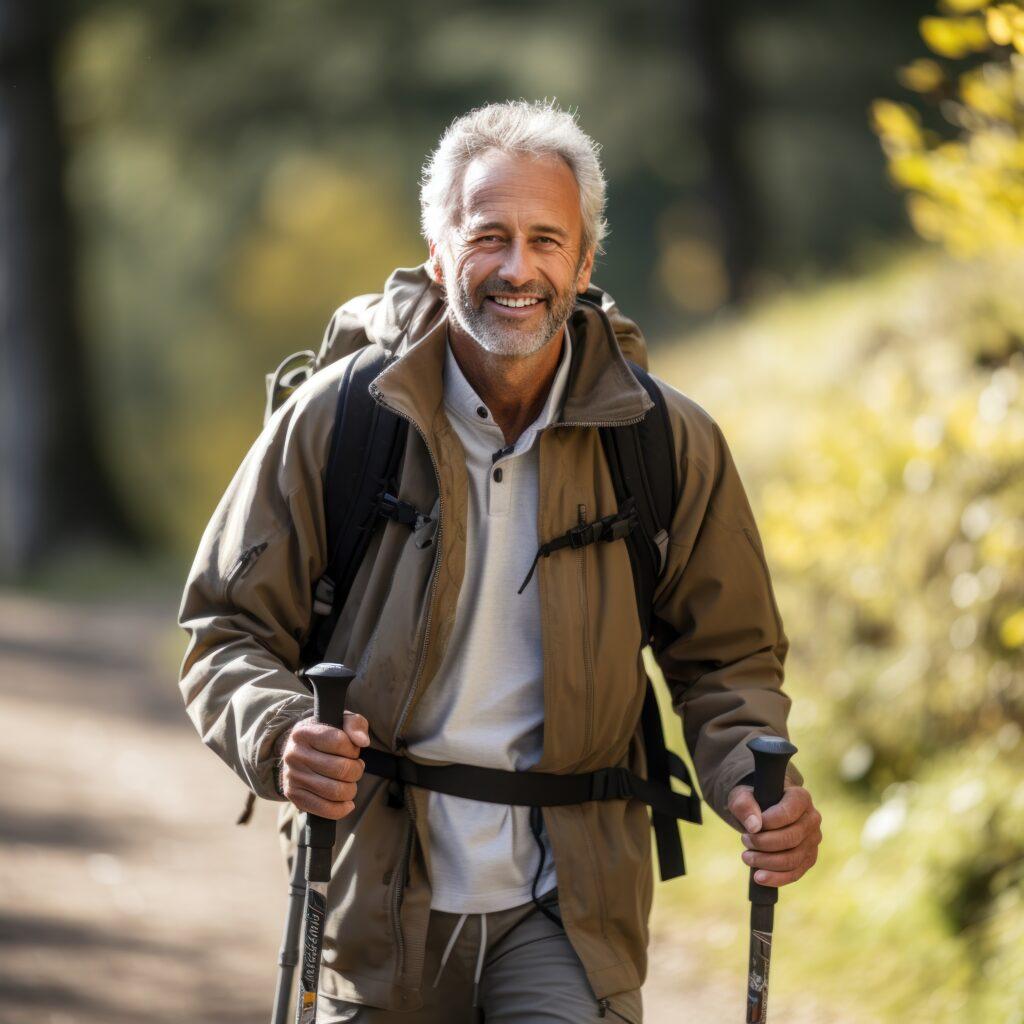
Nordic walking offers older adults a low-impact yet highly effective exercise option for improving fitness and overall well-being. Individuals can confidently embark on a safe Nordic walking journey by prioritizing safety measures, mastering proper techniques, and being prepared for various conditions. Let’s stride together towards a healthier and more active lifestyle. Lace up your shoes, grab your poles, and enter a world of invigorating fitness!
Frequently Asked Questions
In this section, you’ll find detailed answers to common concerns about safety practices, stabilizing techniques, potential risks, recommended gear, adjustments for adverse weather, and warm-up/cool-down routines for Nordic walking. These guidelines aim to enhance and ensure an enjoyable and safe Nordic walking experience.
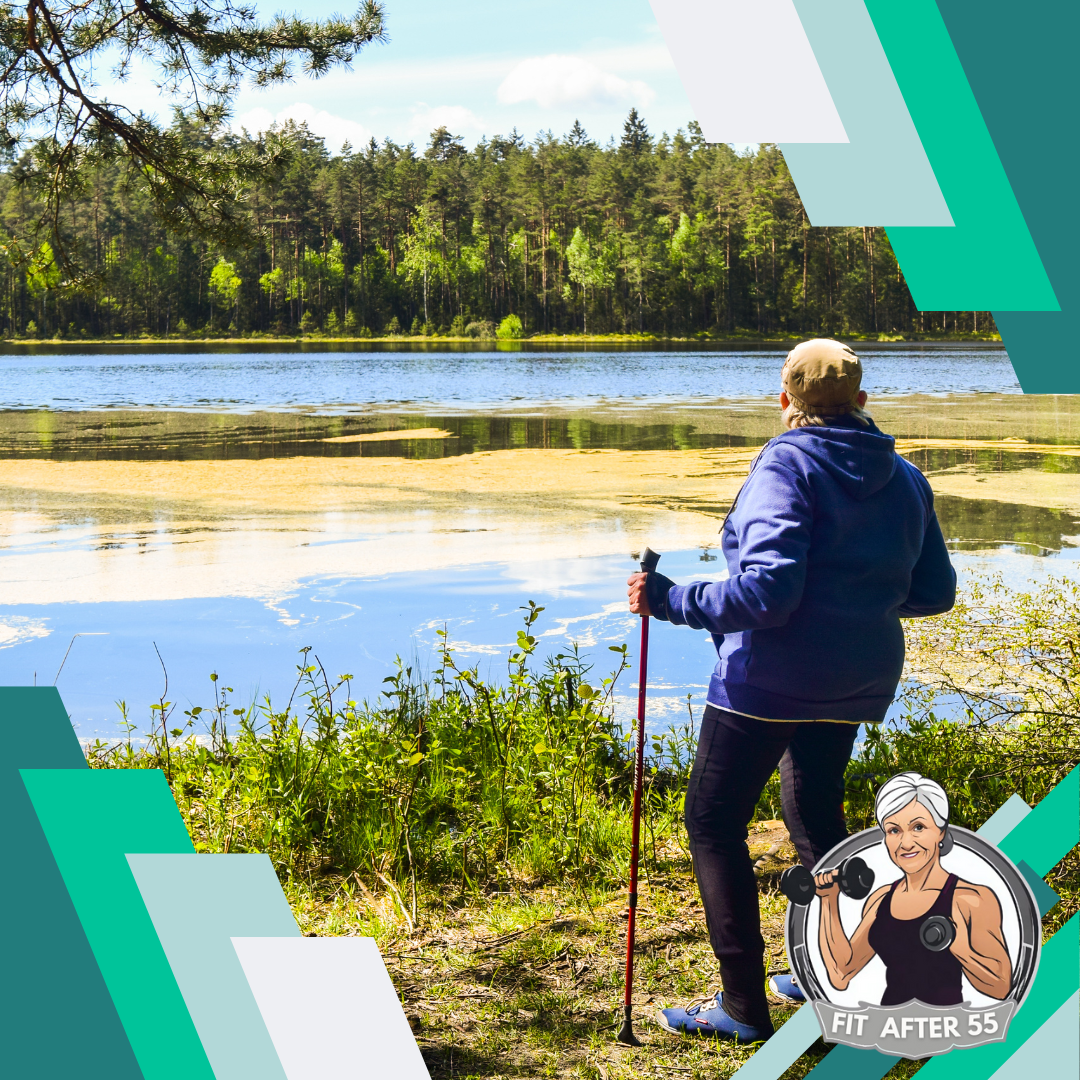
What precautions should be taken to avoid injuries while Nordic walking?
To reduce your risk of injury, make sure to choose the correct pole length and wear shoes with good grip. Learn the proper walking technique involving a straight back and engaged core to distribute the impact evenly across your body.
How can one maintain stability when walking on muddy terrain?
Shorten your pole length and use rubber tips for better pole traction when walking on muddy terrain. Focus on planting your poles firmly and wearing waterproof boots with deep treads to maintain a steady grip on the slippery surface.
What are the potential downsides or risks associated with Nordic walking?
If not done correctly, Nordic walking can lead to muscle strain or joint pain. Overstriding or excessive pole force can stress your lower body, while improper pole use may strain your shoulders or arms.
What safety gear is recommended for individuals engaging in Nordic walking?
For optimal safety, wear reflective clothing for visibility, a hat and sunglasses for sun protection, and gloves to avoid blisters. Select poles with a comfortable strap to avoid dropping them and to provide better control.
How should one alter their Nordic walking technique in adverse weather conditions?
In adverse weather conditions, such as rain or snow, adjust your technique. Take shorter, more controlled strides and plant your poles closer to your body to prevent slips and falls.
Are there any specific guidelines for warming up or cooling down before and after Nordic walking?
Prior to Nordic walking, perform dynamic stretches to warm up your muscles. Focus on your legs, arms, and core. After completing your walk, cool down with static stretches to reduce muscle stiffness and aid recovery.
Discover Your Path to Active Aging: Visit Fit After 55 Now!
Ready to take your fitness journey to the next level? Then visit our official website, https://fit-after-55.com/, for expert guidance, tips, and resources tailored specifically for individuals aged 55 and above. Whether new to Nordic walking or seeking to enhance your routine, discover the path to safe and effective exercise for an active you. Empower yourself and be fit after 55. Visit us now and start striding towards a healthier you!

